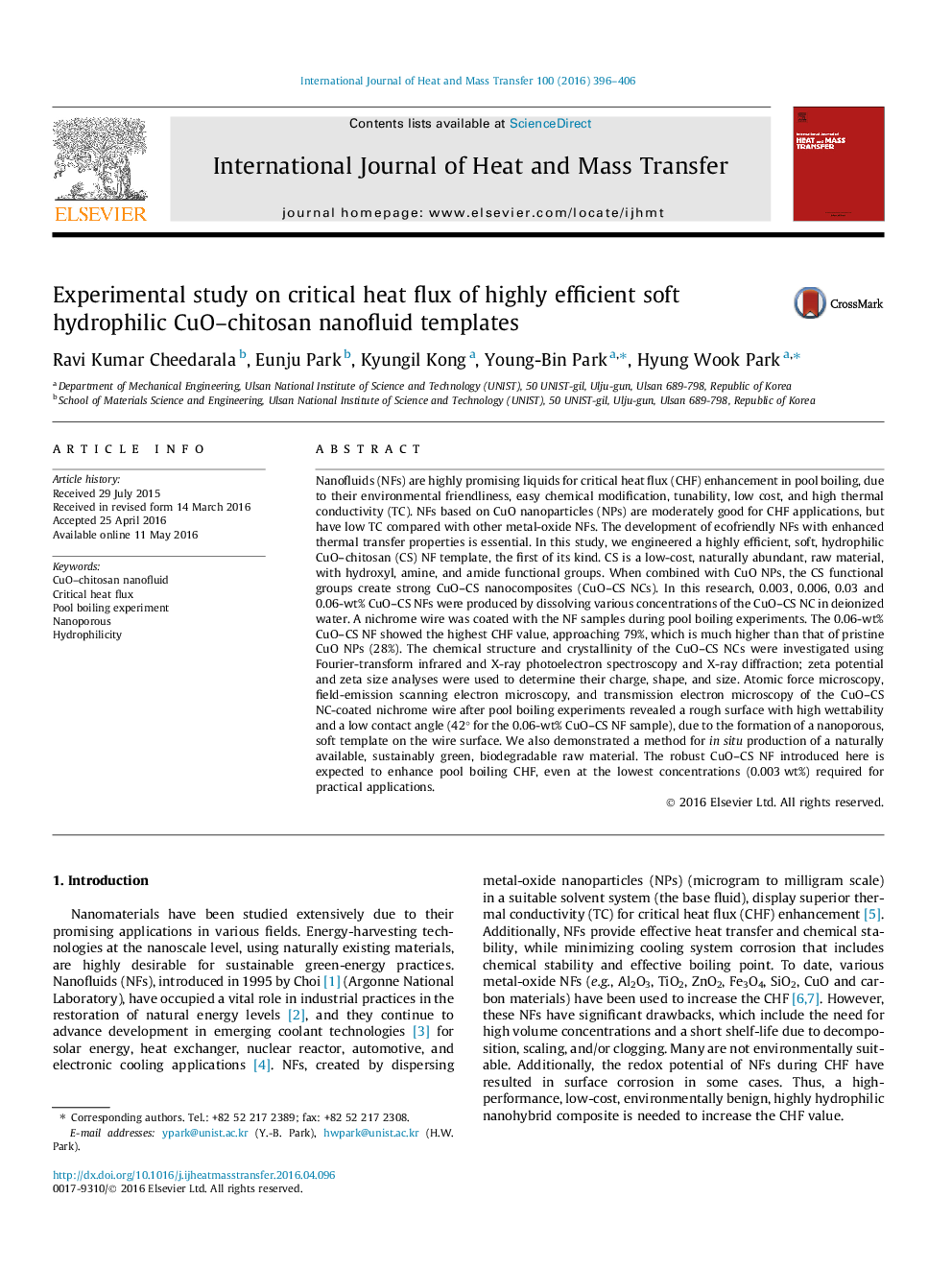| کد مقاله | کد نشریه | سال انتشار | مقاله انگلیسی | نسخه تمام متن |
|---|---|---|---|---|
| 656369 | 1458042 | 2016 | 11 صفحه PDF | دانلود رایگان |
• We fabricated the CuO–chitosan colloidal nanofluids for enhancing the CHF values.
• We enhanced the CHF values up to 79% at the 0.06 wt% CuO–CS NFs.
• The developed built-up soft template on the wire surface has high hydrophilic nature.
Nanofluids (NFs) are highly promising liquids for critical heat flux (CHF) enhancement in pool boiling, due to their environmental friendliness, easy chemical modification, tunability, low cost, and high thermal conductivity (TC). NFs based on CuO nanoparticles (NPs) are moderately good for CHF applications, but have low TC compared with other metal-oxide NFs. The development of ecofriendly NFs with enhanced thermal transfer properties is essential. In this study, we engineered a highly efficient, soft, hydrophilic CuO–chitosan (CS) NF template, the first of its kind. CS is a low-cost, naturally abundant, raw material, with hydroxyl, amine, and amide functional groups. When combined with CuO NPs, the CS functional groups create strong CuO–CS nanocomposites (CuO–CS NCs). In this research, 0.003, 0.006, 0.03 and 0.06-wt% CuO–CS NFs were produced by dissolving various concentrations of the CuO–CS NC in deionized water. A nichrome wire was coated with the NF samples during pool boiling experiments. The 0.06-wt% CuO–CS NF showed the highest CHF value, approaching 79%, which is much higher than that of pristine CuO NPs (28%). The chemical structure and crystallinity of the CuO–CS NCs were investigated using Fourier-transform infrared and X-ray photoelectron spectroscopy and X-ray diffraction; zeta potential and zeta size analyses were used to determine their charge, shape, and size. Atomic force microscopy, field-emission scanning electron microscopy, and transmission electron microscopy of the CuO–CS NC-coated nichrome wire after pool boiling experiments revealed a rough surface with high wettability and a low contact angle (42° for the 0.06-wt% CuO–CS NF sample), due to the formation of a nanoporous, soft template on the wire surface. We also demonstrated a method for in situ production of a naturally available, sustainably green, biodegradable raw material. The robust CuO–CS NF introduced here is expected to enhance pool boiling CHF, even at the lowest concentrations (0.003 wt%) required for practical applications.
Journal: International Journal of Heat and Mass Transfer - Volume 100, September 2016, Pages 396–406
